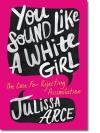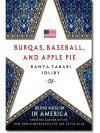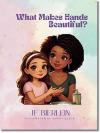Books for Holiday Giving or Winter Reading

Whether you want a book to give as a gift, or you want something to read yourself, there are literally hundreds of books about racism to choose from.
This article expands the book list we began in 2023, and we will continue to add recommendations in coming years.
The books listed here are recommended by Ending Racism USA staff, board members, and newsletter subscribers. Many have longer reviews on the website.
There are two other ways to help us all find and share useful books. If you have a favorite book that you think others will benefit from reading, write a review and we can add it to next year’s list. Or, if you have read a book on this list, you can write a comment on the book review page to help others decide if this is a book they want to gift or read.
Non-Fiction (Racism)
“White Fragility”

If you have a white friend who is a little touchy about race and doesn’t want to talk to you about it, there is a book about that. It is by Robin DiAngelo and called “White Fragility: Why It's So Hard for White People to Talk About Racism.” DiAngelo helps us understand our touchy friends and suggests ways to approach them. Reading it, I also learned some things about myself. (Recommended by Ken Bedell and Brenda Girton-Mitchell.)
“How to Be an Antiracist”

What about a gift for someone who says, or you believe, they are overcoming their white fragility. Maybe they have even said to you, “I’d like to understand more about how racism works.” When it comes to explaining how racism functions and ways to approach dismantling it, Ibram X. Kendi’s book “How to Be an Antiracist” explains it all. He tells stories from his life while presenting the science of racism. Since it was published in 2019, it has become a classic. (Recommended by Ken Bedell.)
“The Sum of Us: What Racism Costs Everyone and How We Can Prosper Together”

Heather McGhee presents a straightforward and compelling argument that racism is not useful for anyone. It does not benefit white people, and it makes it impossible for everyone to “prosper together.” “Draining the pool” is a metaphor that sums up her argument. When white people decided to close the public swimming pool because they did not want to swim with Black people, the white kids didn’t have a pool to swim in. Actions designed to preserve white privileges “cost everyone.” (Recommended by Shirley Struchen.)
“Caste”

For those who want to learn about racism from a broad historical and global perspective, “Caste: The Origins of Our Discontents” by Isabel Wilkerson is the book for you, your friends, and your family. This book, published in February of 2023, shows how American racism can be understood as the ranking of human beings. Racism is not uniquely American. The book provides a window through which to understand racism as the caste system. (Recommended by Ken Bedell.)
Non-Fiction (Constitution and Politics of Racism)
“We Were Eight Years in Power”

Ta-Nehisi Coates is another author who explains racism. His book, “We Were Eight Years in Power,” is a series of essays that examine the political scene as it has affected African Americans from the eight years of Reconstruction after the Civil War up to the present. (Recommended by Forest Preston III, friend of Ending Racism USA.)
“An African American and Latinx History of the United States”

Professor and activist Paul Ortiz has written a history book that is not just about the past and how African American and Latinx organizers have worked for justice and against racism in the United States. It is a clear call for all of us to celebrate our commitment and to join the continuing struggle against injustice and imperialism at home and around the world. The little-known history is important because of the honor African American and Latinx organizers deserve and have not received. But even more important are the lessons they offer as we pick up the struggle for justice for all oppressed people in the United States and across the globe. (Reviewed and recommended by Ken Bedell.)
“Tyranny of the Minority: Why American Democracy Reached the Breaking Point”

Steven Levitsky and Daniel Ziblatt build a case for Americans to modify the structure of the federal government. Starting with, “it is a simple fact: many of America’s venerated political institutions are not very democratic; indeed, they are not made for democracy,” they go on to propose fifteen changes to our government structures to make America a multiracial democracy. Their vision of democracy is that at least 51%, rather than a minority of citizens, direct the government. While Ending Racism USA envisions a government where “all identity groups empower each other, and this shared power is used to benefit all Americans,” the analysis and proposals in this book are an important contribution to the discussion. (Reviewed and recommended by Ken Bedell.)
“The Cult of the Constitution”

Mary Anne Franks’ book is a fascinating collection of arguments. She writes, “We are facing a continuing crisis of constitutional inequality. For more than two hundred years, the lion’s share of legislative, judicial, political, and social resources has been devoted to protecting the constitutional rights of white men above all others.” Her solution is to focus on ensuring equal protection of the law for everyone. (Reviewed and cautiously recommended by Ken Bedell.)
Fiction
“Native Son”

Another way to engage a friend with a gift that doesn’t shout, “I think there is something wrong with you and this book will fix your racism,” is to give them a novel. There is scientific evidence that novels can help us develop empathy. And without empathy for people we don’t know, it is difficult to overcome prejudices about them. Richard Wright’s “Native Son” opened my eyes when I read it in the 1960s. Even though the novel is set in 1930s Chicago, it is impossible not to be drawn into the desperate and tragic life of the main character, Bigger Thomas, and, in the process, to empathize with him. (Recommended by Ken Bedell.)
“The Nickel Boys”

“The Nickel Boys” by Colson Whitehead is based on a true story of horrors at a now-defunct reform school/camp in Tallahassee, Florida, in the 1960s. The story puts the main character, Elwood, in the context of a society defined by racism. (Recommended by Forest Preston.)
“Beloved”

I haven’t read them all, but any of Toni Morrison’s 11 novels would make a good gift and generate plenty of discussion. I recommend “Tar Baby” because of the interconnected relationship she creates that illustrates the complex penetration of racism in American society. (Recommended by Ken Bedell.) Forest Preston suggests the novel that follows “Tar Baby.” He writes, “If you have not yet read the landmark novel “Beloved,” what are you waiting for?”
Memoir
“You Sound Like a White Girl: The Case for Rejecting Assimilation”

Julissa Arce has written a memoir that is very personal, but sometimes reads like a collection of essays to help us all embrace a multicultural future for America. Her main point is that the internalization of white values needs to be named and assimilation rejected. Specifically, she rejects the lies that to be an American you must adopt the value of whiteness, the necessity of English, and the promise of success. In place of white values, she calls on Mexican Americans and all people of color to reclaim their history, identity, and culture. (Reviewed and recommended by Ken Bedell.)
“Minefields & Miracles”

Racism in America is not just directed toward Black people. We sometimes have friends and relatives who surprise us with their antisemitism or Islamophobia. First person books written by Jews and Muslims are a way to open discussions and learn things about ourselves. I love the book written by Jewish author and teacher Ruth Broyde Sharone, “Minefields & Miracles: Why God and Allah Need to Talk.” In chapters about her own journey, she reveals the shared humanity of Jews, Muslims, and all people. (Recommended by Ken Bedell.)
“Burqas, Baseball, and Apple Pie”

“Burqas, Baseball, and Apple Pie: Being Muslim in America” by Ranya Tabari Idliby is a sometimes funny and sometimes sobering book by a Muslim American. Idliby opens a window into the daily life of a mother who is addressing the challenges of being Muslim in America after 9/11. (Recommended by Ken Bedell.)
“My Seven Black Fathers”

Will Jawando, the author of “My Seven Black Fathers: A Young Activist's Memoir of Race, Family, and the Mentors Who Made Him Whole,” has written a compelling personal story that also illustrates the sources of his commitment to participating in ending racism. This is an important book by a young Black person who knows where he is coming from and is committed to changing America. Full disclosure: Jawando is a friend of Brenda Girton-Mitchill and mine from when we worked together in the Obama administration. (Recommended by Brenda Girton-Mitchell and recommended and reviewed by Ken Bedell.)
“On Juneteenth”

“On Juneteenth” is a little book by Annette Gordon-Reed. She uses experiences from her life combined with her extensive knowledge about Texas and history to change the way we think about racism, history, Texas, and Juneteenth. (Reviewed and recommended by Ken Bedell.)
“Breaking Free From Rigid Boxes”

“Breaking Free From Rigid Boxes: From the Outside Looking In” by Diana Koppen and Pam Doocy-Curry, is the story of their aunt Marion Helland’s 91 years of civil rights activism. It is a wonderful example of an everyday white woman from the midwest whose entire life was spent promoting human rights. She didn’t write a memoir, but her nieces tell her story from going through boxes of notes and paper she saved about her life. (Reviewed and recommended by Carolyn Butterworth, a friend of Diana Koppen.)
“Little Brother”

“Little Brother: Love, Tragedy, and My Search for the Truth” is written by a white man, Ben Westhoff, who volunteered with the Big Brothers Big Sisters of America program. He was assigned a Black youth, Jorell, from Ferguson, Missouri, as his little brother. When Jorell is shot at 19, Ben commits to learning what happened and, in the process, learns things about Jorell’s life that were never shared with his white big brother. (Reviewed and recommended by Sarah Cook, a classmate of Ben Westhoff in college.)
Children
“What Makes Hands Beautiful?”

J.F. Bierlein, part of the Ending Racism USA community, recommends this book he wrote with his friend Houda Zahid, designed for children ages 2-12. Bierlein explains the story behind the book, “I was writing a poem about how it is not what hands look like that makes them beautiful, but what they do, and the love that flows through them. Ms. Houda Zahid, my Arabic-language teacher, is also an illustrator, and we re-wrote the story around an interaction between her and her daughter. In fact, the mother and daughter in the story look a lot like Houda and her daughter, Raniya! The idea is that we value people for who they are and what they do, regardless of what they look like. It is about the dignity of work and respect for other people.”
“Samara and the Tricky Breeze”

Aurilla Woodburn is part of the Ending Racism USA community. She writes books to help children claim the values of a world without racism. She recommends this book and the following book, which are wonderfully illustrated by Fina Tedesco. Woodburn writes about this book, “Samara, a young girl, encounters someone who looks and behaves very differently from herself. He is bossy and a bit of a bully. Samara wins him over with her kindness and wisdom, and they become good friends. The book’s message is that folks who are kind are the best friends yet!”
“Samara and the Rumbly Rainy Night”

This is the second book in Aurilla Woodburn’s Samara stories. It is also illustrated by Fina Tedesco. Woodburn writes, “Samara, a young girl, experiences a big frightening storm. She kindly invites her stuffies to shelter and snuggle with her throughout the scary night. When they wake up, they discover that they not only helped each other, but that after a storm, the sun always comes up. The message of the book is that friends help each other, that's how it's meant to be.”
“We Are Free, You & Me”

When Colin Kaepernick knelt during “The Star Spangled Banner” at football games, he lost his career in the NFL but not his passion for standing up for racial justice. He has written a book for children with Nessa Diab, illustrated by Gladys Jose. They challenge kids to celebrate their freedom. (Reviewed and recommended by Brenda Girton-Mitchell.)
